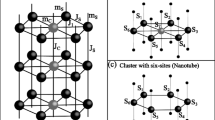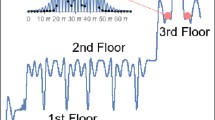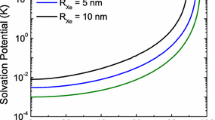A two-dimensional Wigner cluster (2DWC) with the number of electrons up to 200 in a parabolic potential well has been studied numerically and analytically. It has been shown that the inner part of the 2DWC in the axisymmetric potential well is polycrystalline, whereas electrons in outer layers form pronounced circular shells. The scaling of the cluster under the variation of the stiffness of the potential well has been considered. The threshold of the free rotation of the solid cluster in the axisymmetric potential well has been determined. The action of an alternating magnetic field generated by a coaxial solenoid on the 2DWC has been examined. It has been shown that the initially immobile solid 2DWC subjected to a weak vortex electric field begins to rotate at an angular velocity equal to half the cyclotron frequency. Furthermore, in a stronger vortex field, the cluster not only rotates but also begins to be periodically compressed, holding its structure. A further increase in the vortex field can lead to the total collapse of the cluster accompanied by the destruction of its structure. A sufficiently strong vortex electric field can also result in the differential rotation of the shells of the 2DWC. The rotational friction coefficient caused by ohmic losses in the gate, which can restrict the free rotation of the 2DWC, has been determined.






Similar content being viewed by others
REFERENCES
E. P. Wigner, Trans. Faraday Soc. 34, 678 (1938).
A. V. Chaplik, Sov. Phys. JETP 35, 395 (1972).
P. M. Platzman and H. Fukuyama, Phys. Rev. B 10, 3150 (1974).
A. V. Chaplik, JETP Lett. 31, 252 (1980).
C. C. Grimes and G. Adams, Phys. Rev. Lett. 42, 795 (1979).
R. C. Ashoori, Nature (London, U.K.) 379, 413 (1996).
C. Yannouleas and U. Landman, Phys. Rev. Lett. 82, 5325 (1999).
R. Egger, W. Häusler, C. H. Mak, and H. Grabert, Phys. Rev. Lett. 82, 3320 (1999).
Mehrdad Mahmoodian and M. V. Entin, J. Phys.: Conf. Ser. 2227, 012012 (2022).
Yu. E. Lozovik, Sov. Phys. Usp. 30, 912 (1987).
V. M. Bedanov and F. M. Peeters, Phys. Rev. B 49, 2667 (1994).
V. A. Schweigert and F. M. Peeters, Phys. Rev. B 51, 7700 (1995).
A. V. Filinov, M. Bonitz, and Yu. E. Lozovik, Phys. Rev. Lett. 86, 3851 (2001).
R. Chitra and T. Giamarchi, Eur. Phys. J. B 44, 455 (2005).
Y. P. Chen, G. Sambandamurthy, Z. H. Wang, R. M. Lewis, L. W. Engel, D. C. Tsui, P. D. Ye, L. N. Pfeiffer, and K. W. West, Nat. Phys. 2, 452 (2006).
N. D. Drummond, and R. J. Needs, Phys. Rev. Lett. 102, 126402 (2009).
Y. P. Monarkha and V. E. Syvokon, Low Temp. Phys. 38, 1067 (2012).
M. Zarenia, D. Neilson, B. Partoens, and F. M. Peeters, Phys. Rev. B 95, 115438 (2017).
I. Shapir, A. Hamo, S. Pecker, C. P. Moca, Ö. Legeza, G. Zarand, and S. Ilani, Science (Washington, DC, U. S.) 364, 870 (2019).
E. C. Regan, D. Wang, C. Jin, et al., Nature (London, U. K.) 579, 359 (2020).
B. Padhi, R. Chitra, and P. W. Phillips, Phys. Rev. B 103, 125146 (2021).
T. Smolenski, P. E. Dolgirev, C. Kuhlenkamp, A. Popert, Y. Shimazaki, P. Back, X. Lu, M. Kroner, K. Watanabe, T. Taniguchi, I. Esterlis, E. Demler, and A. Imamoglu, Nature (London, U. K.) 595, 53 (2021).
R. Feynman, R. Leighton, and M. Sands, The Feynman Lectures on Physics (Pearson, 1970), Vol. 2, Chap. 17.
Funding
This work was supported by the Russian Foundation for Basic Research (project no. 20-02-00622).
Author information
Authors and Affiliations
Corresponding authors
Ethics declarations
The authors declare that they have no conflicts of interest.
Additional information
Translated by R. Tyapaev
Rights and permissions
About this article
Cite this article
Mahmoodian, M.M., Mahmoodian, M.M. & Entin, M.V. Theory of a Two-Dimensional Rotating Wigner Cluster. Jetp Lett. 115, 608–614 (2022). https://doi.org/10.1134/S0021364022100599
Received:
Revised:
Accepted:
Published:
Issue Date:
DOI: https://doi.org/10.1134/S0021364022100599




